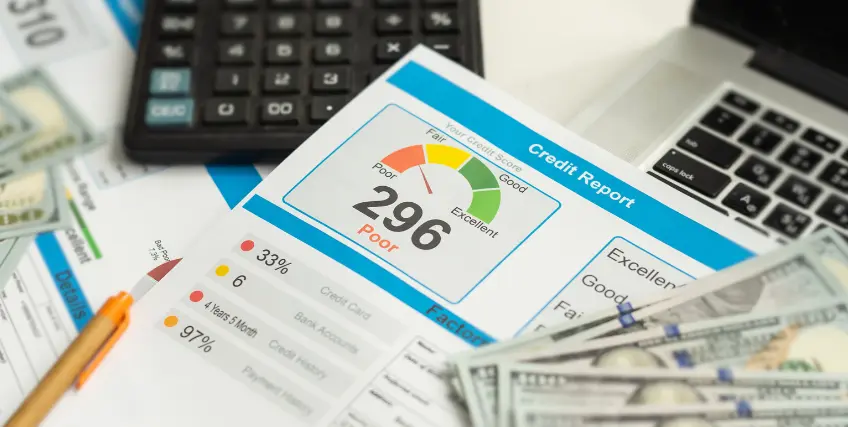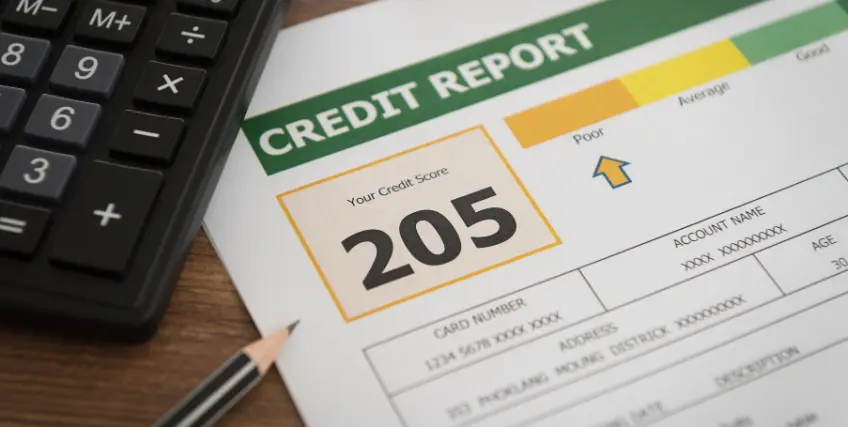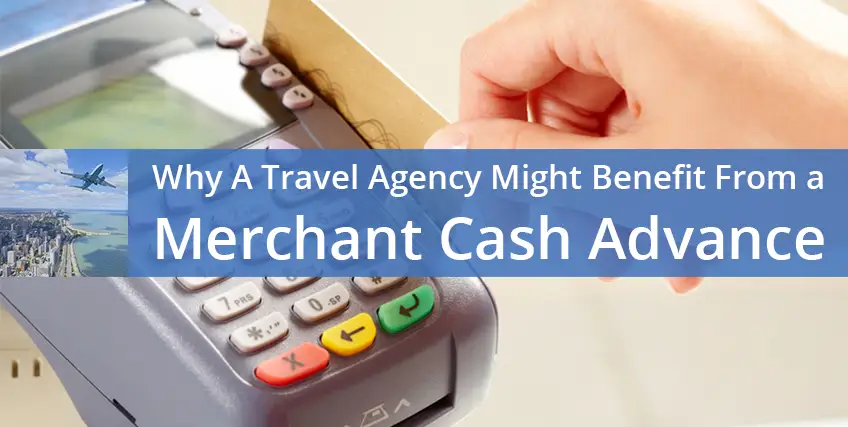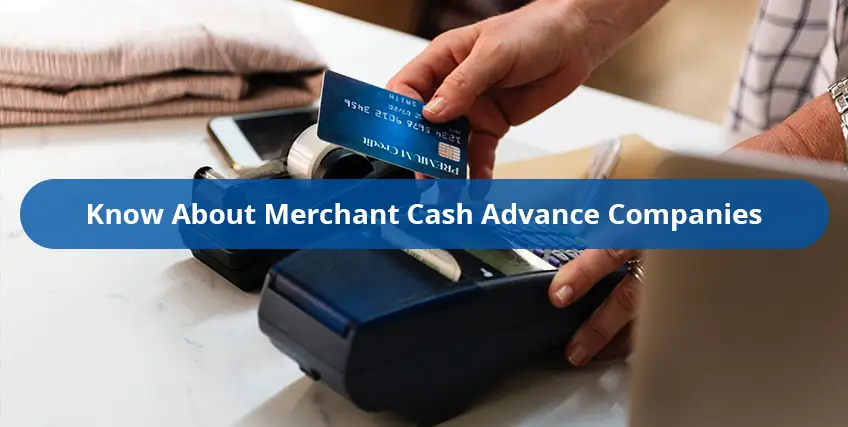What are the Typical Business Loan Terms for Business Owners?
January 09, 2025 | Last Updated on: January 09, 2025

In this article, you’ll learn:
So, you’re applying for a business loan and seeing a lot of terms in the loan agreement. The interest rate and monthly payment are probably the two things that jump out at you, but it’s important not to overlook the other pieces of the puzzle, as a loan with a low interest rate and low monthly payment isn’t always favorable to the borrower.
There are many different types of loans, from traditional bank loans to merchant loans made from businesses to other businesses. As such, it’s important to understand typical business loan terms and carefully read your loan agreement:
In this article:
- An A-Z glossary of the most important business loan terms to know.
- Explore a variety of types of financing options and loan products.
- Learn about merchant financing and other quick business funding options available to small businesses.
Amortization
The term “amortization” refers to two situations – one concerns intangible assets, and the other concerns business loans. For the usual purpose of business loans, you need to understand the latter.
In the business loan context, amortization is the process of making regular payments – split between interest and principal – that allows the borrower to repay the loan in full by its maturity date. In the early days, a higher percentage of each payment is attributed to the interest portion of the loan. However, towards the end of the loan repayment term, a higher percentage of each payment is applied to the principal portion of the loan.
You may be wondering: why does it work like that?
Over time, the interest portion goes down because you’re paying down the principal with each payment. For example, you have a loan for $100,000, and each payment is $2,000. The first payment is $500 principal and $1,500 interest. This reduces the ending balance to $99,500. The interest on $99,500 is lower than the interest on $100,000, so the next $2,000 payment is going to be more than $500 in principal and less than $1,500 in interest.
Annual Percentage Rate
The Annual Percentage Rate (APR) of a loan is the yearly rate charged for a loan – it factors in the interest and fees to be paid over the life of the loan. An APR may also be applied to merchant financing. of a loan is the yearly rate charged for a loan – it factors in the interest and fees to be paid over the life of the loan. An APR may also be applied to merchant financing.
Here’s how it works:
You add the interest and fees and then take that amount and divide it by the principal. You divide that result by the number of days in your loan term, multiply by 365, and then multiply by 100.
APR is an excellent way to compare loan products, as a low interest rate can be deceiving if it is accompanied by high fees. Typically, short-term business loans have higher APRs than long-term ones.
Balloon Payment
With some types of loans, your payments are split between interest and principal. But in other cases, you make interest-only monthly payments throughout the life of the loan and pay off the principal in one lump sum payment at the end of the life of the loan. That one lump sum payment is referred to as a balloon payment.
Balloon payments may be particularly useful in paying off merchant loans early.
Blanket Lien
A blanket lien gives a lender the right to seize all of a borrower’s assets in the event of a default. In a vacuum, a blanket lien is very unfavorable for borrowers. But if you’re a “risky” borrower who is struggling to qualify for a loan, or you’re getting offered a much lower interest rate in return for agreeing to a blanket lien, it may be worth considering.
Alternatively, you can also explore merchant financing options like merchant loans or MCAs.
Collateral
The term collateral refers to a business asset, such as real estate, a vehicle, or equipment, that the lender can seize in the event of a default. With collateral, you increase the likelihood of qualifying for small business financing and securing attractive small business loan terms.
Default
If you default on a loan, you didn’t fulfill your obligation to repay the loan. At that point, the lender can take legal action against you, depending on the loan agreement terms.
Factor Rate
A factor rate is used to express the total repayment amount on a short-term loan or merchant cash advance or other type of merchant advance funding. You multiply the loan amount by the factor rate to get the total repayment amount. For example, you have a loan amount of $40,000 and a factor rate of 1.25. In this case, you would be on the hook for $50,000.
Interest-Only Payment Loan
With an interest-only payment loan, your monthly payment depends on the interest rate of the loan. At the end of the loan's life, you either pay off the principal in one lump sum payment or refinance and get a new loan.
Loan-to-Value Ratio
If you’re taking out a loan to finance a specific asset, such as new equipment or commercial real estate, you should calculate the loan-to-value (LTV) ratio. This ratio represents the percentage of the asset that is covered by the loan.
For example, you want to buy a new piece of equipment for $50,000 and can get a loan for $40,000. In this case, the LTV ratio would be 40,000 / 50,000 = 0.80. The ratio is usually expressed as a percentage, so it would be 80% in this example.
Personal Guarantee
If you have a new business, a bad personal credit score or credit history, or no valuable assets on your balance sheet, a lender may require you to provide a personal guarantee to get a loan. With a personal guarantee, the small business owner puts their personal assets on the line in case of a default. While agreeing to include a personal guarantee may be the only way to get a loan in certain situations, you should carefully consider the consequences.
Prepayment Penalties
If your business exceeds expectations, you may be in a position to repay your business loan ahead of schedule. However, some loan merchant financing agreements include prepayment penalties to compensate lenders for the loss of interest if this scenario comes to fruition. You should try to get a loan without prepayment penalties, but if the lender insists on including them, you should at least be comfortable with the penalty amounts.
Principal
The principal is the amount that you borrowed for your small business, excluding interest. So, if you borrowed $50,000 to meet working capital needs, your principal is $50,000.
Refinancing
If you refinance your debt, it means that you pay off one loan with another loan. The opportunity to get a lower interest rate or extend the length of the repayment period are two common reasons for a borrower to refinance a loan.
Type of Interest Rate
When borrowing money via a loan, there are two types of interest rates: fixed and variable. With a fixed interest rate, the interest remains the same throughout the life of the loan and you’ll make fixed payments. With a variable interest rate, the interest rate could change at some point – this change has the potential to impact your monthly loan payment significantly, so you should determine when and how much the interest rate will change before signing the loan agreement.
Merchant loans tend to use factor rates instead of interest rates and short-term business loans are more likely to have variable interest rates.
Best Practices Before Signing a Loan Agreement
Here are a few best practices before signing a loan agreement to lower your risk of running into trouble:
- Check whether the loan going to be under your personal name or your business name. If it’s the former, your personal assets will be at risk in the event of a default. If it’s the latter, you may be able to limit your liability to your business assets.
- Budget the monthly payments. You should project the future cash flow of your small business and see if it will be enough to cover your monthly payments. Ideally, you will have a cushion to account for unexpected developments. For example, you wouldn’t want to take out a loan with $1,000 monthly payments if you project your cash flow to $1,050 monthly.
- Ask the lender any questions. Ask the lender for clarification if you’re unsure about anything in your loan agreement.
- Have a lawyer review the loan agreement. After reading this article, you will have a strong understanding of typical business loan But it’s still possible to overlook something crucial – that could be costly if you take out a large loan. With that in mind, you should look for a lawyer specializing in reviewing small business loan agreements.
Types of Business Loans
Here are a few loan types for small business owners:
SBA 7(a) Loans
The U.S. Small Business Administration (SBA) is a federal agency that provides loan guarantee programs for small business owners, many of whom are unable to get traditional business loans. The SBA 7(a) loan has a maximum loan amount of $5 million, making it a great loan option for expensive business assets. In addition, the guarantee artificially lowers the interest rate, giving small business owners access to low-cost financing through SBA loans.
While an SBA loan sounds like a great option, it’s tough to qualify for this type of financing due to stringent eligibility requirements. On top of that, the loan application process and review process could be lengthy – you might have to wait months to get an approval or denial decision.
Term Loans
With a term loan, the borrower gets upfront cash to be repaid on a set schedule at a variable or fixed interest rate. The loan amounts start at $25k and go up to $500k, so they can satisfy various business needs. With payment plans ranging from 12 to 36 months, you should be able to find a monthly payment that works based on your cash flow projections.
There are usually high standards to qualify for a term loan. At Biz2Credit, most customers get started with annual revenue greater than $250k, a 660 or higher credit score, and at least 18 months in business. Here’s the good news: you may be able to get financing in as little as a few days – particularly if you use an alternative lender.
Business Line of Credit
A business line of credit is a predetermined amount of money that can be accessed by the borrower when they need the funds – it can be used for general business expenses, further increasing the flexibility of this small business financing option. A business line of credit often has a variable interest rate, however, so you should find out how the interest rate is going to be calculated.
While you may not be able to qualify for a business line of credit with bad credit, it’s not too hard to meet the eligibility requirements with many online lenders. A 580+ credit score, 12 months in business, and $10,000 in average monthly revenue may be sufficient.
Merchant Cash Advances (MCAs)
MCAs are arrangements between commercial businesses rather than between a bank and a business. As such, merchant loans are subject to less regulation, but they’re still a great form of quick business funding.
MCAs tend to have lower eligibility requirements and can put money in your business bank account on the same day you apply. In a typical arrangement, you’ll pay back the loan through a percentage of your credit card sales or other accounts receivable until you’ve satisfied the pre-assessed factor rate.
Merchant advance funding is a great option for business owners with bad credit or who need money very quickly.
The Bottom Line
By understanding the typical business loan terms, you can increase the likelihood of taking out a loan that meets your small business's requirements.
However, you don’t want to wait months to get approved for that loan, which is still the reality at many financial institutions. However, it’s not the reality with Biz2Credit. We help small business owners get access to funds in as little as a few days.
Jyoti Sharma, for example, wanted to immediately open a spa but the banks told her that it would take them 2-3 months to get her funds. So, she decided to turn to Biz2Credit, and she got access to credit at a similar rate to the banks, but with a much shorter wait and less paperwork. Sharma recalled, “Biz2Credit came in like a lifesaver.”
Learn how Biz2Credit can connect you with small business financing.
FAQs
What are the most important business loan terms to know?
It really depends on the type of loan, but some of the most important terms to understand in a loan agreement include the repayment schedule, interest rate, amortization schedule, and penalties.
What are the most common types of business loans?
Traditional term loans or SBA loans backed by the U.S. Small Business Administration are some of the most common, but many businesses also opt for working capital loans, merchant loans, and other types of alternative financing.
What is merchant financing?
Merchant financing is when one business loans money to another business, usually in the form of a merchant cash advance (MCA) or invoice financing arrangement. In these arrangements, the MCA lender pays a lump sum upfront in exchange for a percentage of future credit card sales or unpaid invoices.
What are some best practices before signing a loan agreement?
Before signing a loan agreement, you should always ensure you know whether it’s in your personal name or business name, have a lawyer review the agreement thoroughly, and begin budgeting the monthly payments before getting the money.
What are the benefits of a business cash advance?
A business cash advance, or merchant cash advance, gives you fast access to money — sometimes on the same day you apply. The approval process is less rigid and they offer flexible repayment terms and competitive funding amounts. You don’t need good credit to get a business cash advance.
Frequent searches leading to this page
Recent Articles
Related Articles

Can You Renegotiate Terms on MCA Cash Financing After a Default? What Business Owners Need to Know
November 27, 2024

Business Loan or Merchant Loan? Understanding Loan Options for Your Business
November 25, 2024

Avoiding the Debt Trap: How Stacking MCA Business Financing Can Hurt Your Business Credit
November 7, 2024

Why MCA Business Funding May Be Ideal for Retailers Looking to Expand Inventory
November 5, 2024

Merchant Cash Advance vs. Asset-Based Lending: Which is Right for Your Business?
January 10, 2025

Merchant Cash Advance vs. Traditional Business Loans: Which is Right for Your Business?
January 10, 2025

Merchant Cash Advance vs. Line of Credit: Which is Right for Your Business?
January 9, 2025

5 Things Every Small Business Owner Wishes They Had Known When They Started
January 9, 2025































